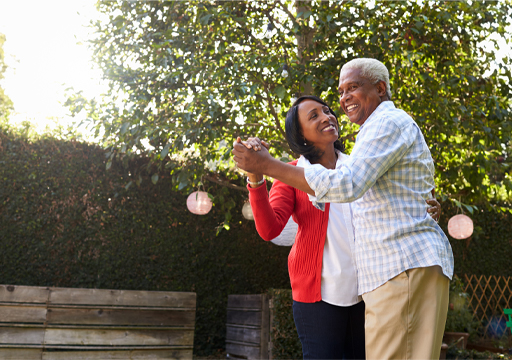6 Being physically active with a care recipient

In Session 1 Video 2, you saw the younger adult carer exercising outdoors with her two daughters. Indeed, being active with family and care recipients is an effective way that a carer can incorporate physical activity into their daily and weekly routines. This can serve to alleviate the negative feelings of guilt reported by carers taking a break (Britton, 2021), while offering both the carer and their care recipient opportunities to benefit their health and wellbeing.
It is, however, important to take an individualised approach when seeking to increase physical activity levels of carers and their care recipients as a joint venture. Research examining exercise interventions for individuals with Alzheimer’s disease and their spousal carers recommended that health professionals should work with them both to set goals and targets that fit with routines, preferred forms of exercise and functional activities, such as walking, shopping, housework and gardening (Malthouse & Fox, 2014).
Interestingly, research by Horne et al. (under review) observed the engagement of individuals with dementia and their carers in a group walking programme and noted that the structure allowed some respite for the carers during the sessions. The research highlighted that the programme allowed the carers to chat with volunteers, while their care recipients were taking part in activities. In Activity 8 you will see a further example of an activity session where a care recipient and their carer can be active and seek the company of others.
Activity _unit3.7.1 Activity 8
Watch Video 5, which introduces you to the Memory Lane Café. Consider the benefits to both the carer and care recipient from attending such sessions.
Discussion
The video shows how Café organisers opened up the sessions to not only individuals with dementia and their carers, but to others too, to create an inclusive environment. You might have reflected on the social benefits for the attendees – both the carers and care recipients – in addition to the physical and mental health benefits from taking part in physical activities such as dance.
